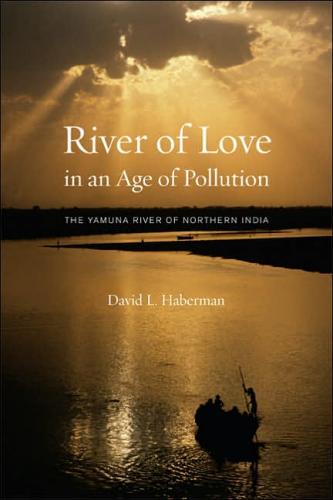 The Washington Post foreign service -- which thankfully still exists -- sent out this story on Thursday: "New Delhi's filth continues to choke once-sacred Yamuna River." It's a very interesting and well-timed piece in light of all the talk this week at the U.N. climate conference in Copenhagen about getting better environmental controls in rapidly industrializing countries, particularly in China and India. The story does an excellent job illustrating the environmental problems and challenges in contemporary India. Can't fault it there:
The Washington Post foreign service -- which thankfully still exists -- sent out this story on Thursday: "New Delhi's filth continues to choke once-sacred Yamuna River." It's a very interesting and well-timed piece in light of all the talk this week at the U.N. climate conference in Copenhagen about getting better environmental controls in rapidly industrializing countries, particularly in China and India. The story does an excellent job illustrating the environmental problems and challenges in contemporary India. Can't fault it there:
With his blue-gloved hands, Rizwan Ali lowered the forked dredging tool slowly into the foul-smelling river and pulled out rotting marigold garlands, shoes, plastic bags, decaying fabric, gooey industrial waste and broken bangles."This is the first time I have come to the river. It is black and full of filth. There are no fish. Is it a river or a drain?" Ali said, before turning to teach a group of children how to clean the Yamuna River, as part of a volunteer drive to revive New Delhi's lifeline. "Because of our lifestyle and neglect, the river is breathing its last breath."
But the headline refers to the "once-sacred" river. I thought we might get some interesting religious perspective; after all religion has a large role in shaping how people interact with the natural environment. Here's what the Post says about that:
The relationship between the holy Yamuna River, said to be a manifestation of a Hindu goddess, and the Indian capital is a complex one. Most residents are aware of its plight but rarely visit the riverbank, except to make Hindu religious offerings during festivals and funerals.
Ok, not terribly specific. Later the story tells us this:
Almost all of India's major rivers have suffered because of population growth, development, industrial and urban waste, as well as religious rituals in which residents toss flowers, fruits and coconuts into the water.
That's all we get about how Hindus interact with their sacred rivers. Which is odd, because others seem to think religion is very important for understanding the pollution problems in India. I found River of love in an age of pollution: the Yamuna River of northern India by Indiana University Religious Studies Professor David L. Haberman on Google books. Allow me to quote from the first paragraph of the book on he says that the religious cultures of sacred rivers in India offer a unique avenue for approaching environmental restoration. The book is all about the overlap between religion and ecology.
Good concise info on the Yamuna river's religious significance appears to be beyond the limited time I have to research it but, from what I've gathered, the God Krishna is often attached to the river. From The Book of Krishna (part of a larger Penguin series on Hindu Gods), I learned that "In the waters of the Yamuna as it flowed on the shores of Vrindavan, there was, so the lore goes, one viciously noxious pool." The book then goes on to quote the Harivamsa's description:
Even a God could scarcely have crossed it. The pool was deep and blank as a motionless sea. It's surface burned with the brilliance of a bushfire. It's stagnant depths were impenetrable, like the sky thick when with clouds. It was difficult to walk along its shore which was pitted by large snake holes. The air above was empty of birds. Fumes rose from the water like smoke from a putrid fire.
Eventually Krishna heroically dives into the "toxic waters" and subdues Kaliya, the five-headed king of the serpents that was living in the pool, eventually banishing him to the ocean. The incident greatly burnished Krishna's legend.
This is but one important story relating to the river's religious significance and it's, uh, oozing with environmental symbolism. The Washington Post story admirably fulfills it's primary purpose of describing environmental challenges in India, but I felt like feinting towards the fact the river is considered sacred -- in the headline no less -- fleshing out this aspect of the river's cultural significance was a very big missed opportunity.
